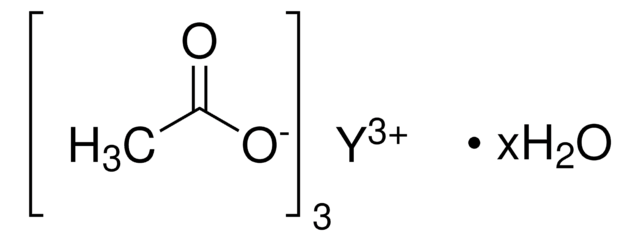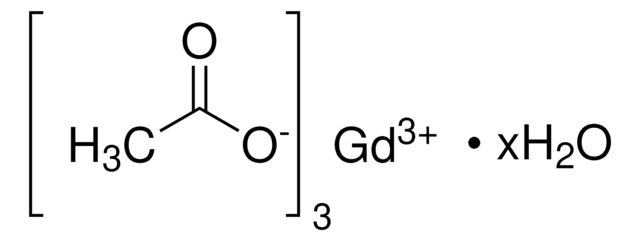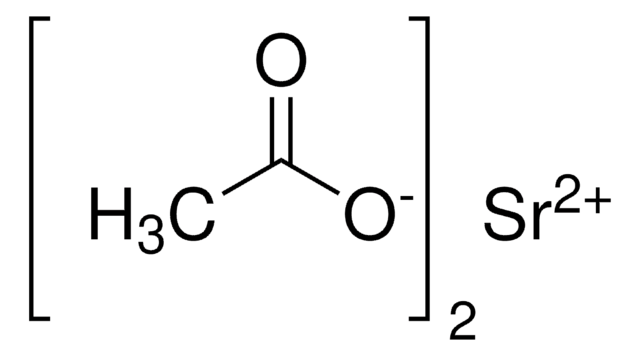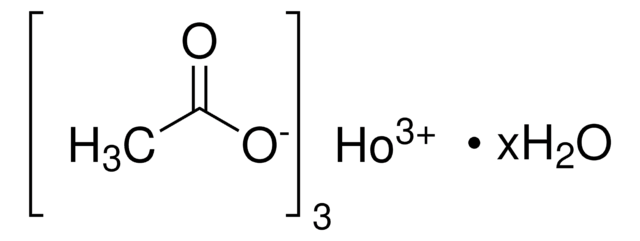306339
Lanthanum(III) acetate hydrate
99.9% trace rare earth metals basis
About This Item
Recommended Products
Quality Level
Assay
99.9% trace rare earth metals basis
form
crystalline powder
composition
Degree of hydration, ≤2
reaction suitability
core: lanthanum
reagent type: catalyst
SMILES string
O.CC(=O)O[La](OC(C)=O)OC(C)=O
InChI
1S/3C2H4O2.La.H2O/c3*1-2(3)4;;/h3*1H3,(H,3,4);;1H2/q;;;+3;/p-3
InChI key
YRKCZRMEPGLHRN-UHFFFAOYSA-K
Looking for similar products? Visit Product Comparison Guide
General description
Application
- An additive to improve the corrosion resistance of carbon steel via sol gelprocess. its presence helps in forming a protective layer that mitigates corrosion processes, particularly in harsh environments. It is an alternativefor Cr (VI) due to its excellent self-healing properties.
- A precursor in the synthesis of photoluminescentLaCO₃OH superstructures via solvent/catalyst-free one-step synthesis. LaCO₃OHsuperstructures further find application in light-emitting devices.
- A precursor in the sol-gel synthesis of magnesium and lanthanum-doped titaniumdioxide (Mg-La/TiO₂) photoelectrodes, which significantly enhances thephotocatalytic performance of TiO₂ for use in dye-sensitized solar cells(DSSCs).
Features and Benefits
- High purity: Enhances performance and reproducibility in applications, reduces contamination risks, and leads to higher-quality end products.
- Thermal Stability: Its ability to withstand elevated temperatures makes it suitable for use in high-temperature processes, contributing to the longevity and durability of the final product and enhancing overall performance and reliability.
Storage Class Code
11 - Combustible Solids
WGK
WGK 3
Flash Point(F)
Not applicable
Flash Point(C)
Not applicable
Personal Protective Equipment
Choose from one of the most recent versions:
Already Own This Product?
Find documentation for the products that you have recently purchased in the Document Library.
Customers Also Viewed
Articles
The rare earth elements impact nearly everyone in the world. All of the people living in advanced technological countries and almost all those living in third world countries utilize the rare earths in their everyday living—the car that one drives (gasoline is refined from oil using rare earth catalysts and catalytic converters reduce the polluting emissions from the automotive exhaust), watching the news on TV (the red and green colors in TV screens), the telephones and computers we use to communicate (the permanent magnets in speakers and disc drives), just to name a few examples.
Global Trade Item Number
| SKU | GTIN |
|---|---|
| 306339-100G | 4061826672921 |
| 306339-500G | 4061826672938 |
| 306339-5G |
Our team of scientists has experience in all areas of research including Life Science, Material Science, Chemical Synthesis, Chromatography, Analytical and many others.
Contact Technical Service














